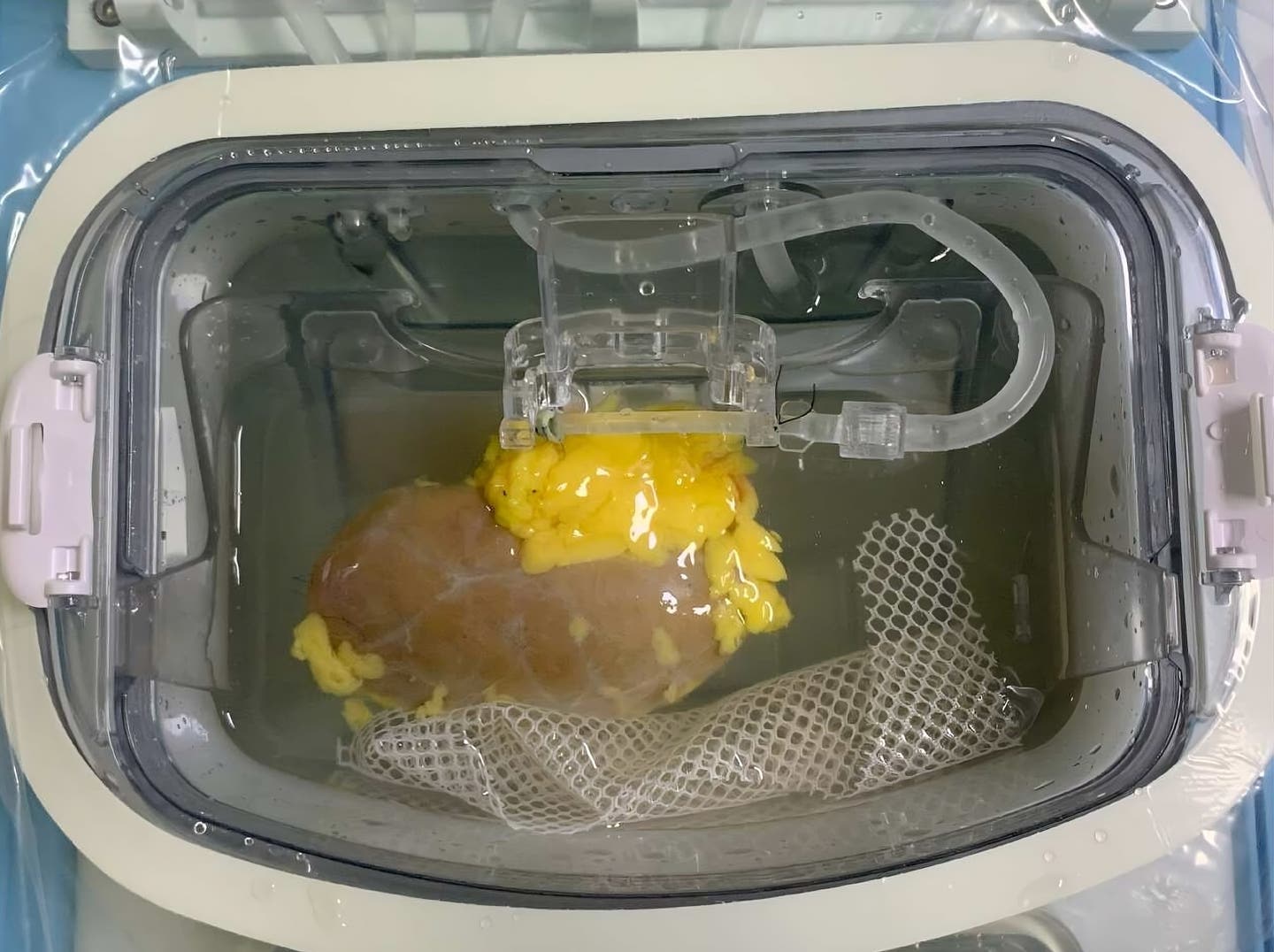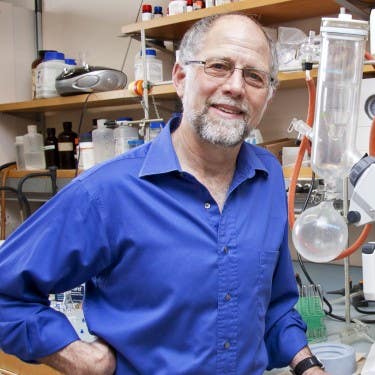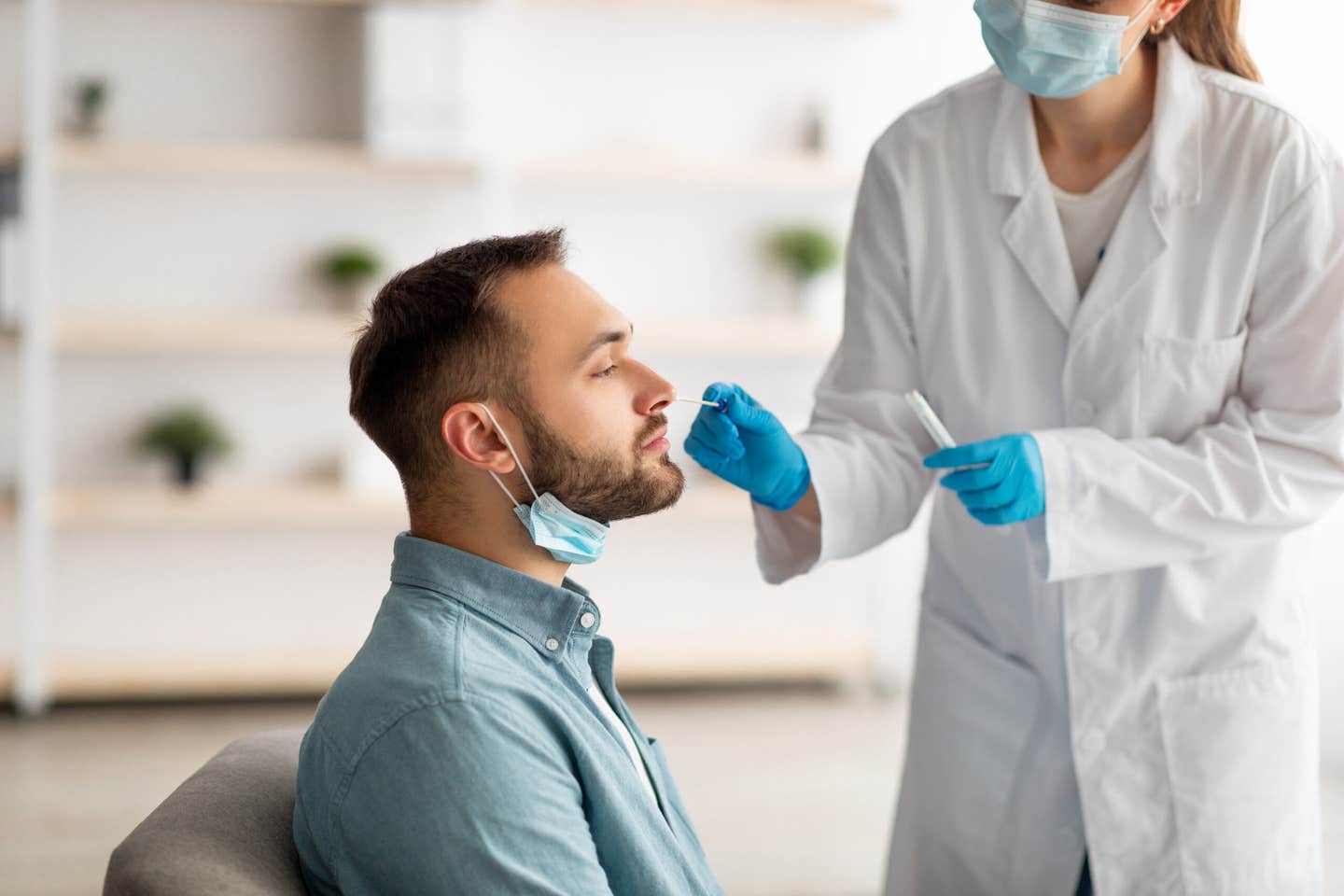Scientists convert type A kidney to type O for first human transplant
Scientists successfully converted a type A kidney to type O and transplanted it, opening new hope for transplant patients.

The kidney, pre-transplant, in a perfusion device which is used to circulate a solution that contains the converting enzymes. (CREDIT: Nature Biomedical Engineering)
For those with kidney failure, a transplant is often the greatest promise of a healthier, longer life. Yet thousands wait years for a match that never comes. Incompatibility of blood type is one of the most formidable hurdles. If the donor kidney is not compatible with the blood type of the person receiving it, the immune system will reject the organ within minutes, a phenomenon known as hyperacute rejection.
In America, more than 13 percent of patients waiting for a kidney transplant in 2021 had been waiting for longer than five years. None of them lived long enough to get one. It is especially hard for type O blood types. Type O patients can only accept kidneys from the same blood group—but they can give theirs to anyone—they will wait years longer than everyone else.
Doctors have tried various ways of filling the gap. ABO-incompatible transplants is one of them, where they reduce the antibodies in the recipient before surgery. Although it has been a success in certain cases, it involves days of preparation, the extreme use of medicines, and typically only works for living donors. Others looked to xenotransplantation, or using organs from animals, but efforts at transplanting pig kidneys and hearts into humans have been met with repeated failure.
Now, another idea is showing promise: changing the blood type of the organ itself before it ever comes before a patient.
Converting Type A To Type O
Researchers at the University of British Columbia (UBC) and elsewhere have spent years trying to discover a way to strip away the sugars that assign blood type from organs. This would theoretically turn a type A kidney into type O, or the "universal donor" type.
The study is rooted in decades of science. Scientists in the 1980s learned how to manipulate red blood cells using enzymes. In 2019, UBC researchers identified two enzymes—FpGalNAc deacetylase and FpGalactosaminidase—that could remove type A antigens efficiently. They proceeded to show the enzymes worked in blood, vessels, and even whole organs in machine perfusion, which keeps organs outside the body alive.
The question was if a transplanted organ, after being changed, could survive in a living human body.
Successful Experiments Lead to a Human Experiment
The research group first demonstrated that the enzymes were able to strip type A markers from human aortas and red blood cells without damaging the tissue. With normal kidneys, the results were startling. When the enzyme solution was perfused in type A kidneys under a hypothermic machine perfusion system, more than 92 percent of A antigens were removed in two hours. Type O markers increased more than fifteenfold, and kidney structure was maintained.


To mimic transplantation, researchers subsequently exposed the altered kidneys to type O plasma containing anti-A antibodies. Untreated kidneys quickly darkened and clogged with clots. Enzyme-treated kidneys stayed pink and weren't clogged.
That advance led to a first-in-human trial.
A Historic First Transplant
In a landmark operation, an A1 kidney—heretofore rejected for transplantation—was enzyme-treated and grafted to a brain-dead recipient of type O with high levels of antibodies.
In the first two days, the kidney functioned with no hyperacute rejection in sight. It excreted urine—around 1.3 liters in 24 hours—and blood perfused its vessels. On the third day, the kidney was weakly immune active. On the fourth day, the rejection was diagnosed, though damage developed slowly and less vigorously than in this type of mismatched transplants.
Dr. Stephen Withers, UBC professor emeritus of chemistry who co-led the enzyme development, called the test a breakthrough. “This is the first time we’ve seen this play out in a human model,” he said. “It gives us invaluable insight into how to improve long-term outcomes.”
Why the Antigens Came Back
One of the unexpected findings was that the A antigens returned quickly. Nearly half had returned by day two, and the immune system began reacting a few days later. That means while enzyme conversion delays rejection, more needs to be done to reach compatibility.
Researchers suggest alternatives such as re-treating with the enzyme following transplanting, but in combination with antibody removal, or with specific immunosuppression to permit the body to accommodate. Ultimately, it's hoped that the immune system can reach a stage of accommodation, during which it begins to accept the transplanted organ.
In order to observe what was happening within the organ, researchers studied thousands of individual kidney cells seven days along. They observed increases in neutrophils and macrophages, immune cells that are responsible for early defense, but low numbers of T and B cells, typically busy with strong rejection. The cells showed evidence of turning on defense genes, which suggested that the kidney was trying to defend itself.
The results were much less damaging than flat-out rejection, and that confidence gave scientists the confidence that the approach could be perfected.
Years of Work Behind the Moment
For Dr. Withers and Dr. Jayachandran Kizhakkedathu, a professor of pathology and laboratory medicine at UBC, the success was the result of over a decade of work. Both set out initially to work on universal donor blood, removing the sugars that mark blood types. The same sugars coat organ blood vessels, and in mismatch, they activate the immune system's aggressive assault.
In 2022, Toronto scientists demonstrated that lungs could be transformed, and global partners shortly thereafter experimented with kidneys in the laboratory. But nobody ever demonstrated the process working within a human body until this year.
Dr. Kizhakkedathu recalled learning of the initial successful transplant overseas in late 2023. "I was so excited. It was a dream moment," he stated.
Next Steps Toward the Clinic
Breakthrough is currently still in proof of concept. The test was done on one brain-dead subject, and more research must be done before patients still alive can be treated. Researchers must refine the enzyme process, extend the period the antigens clear, and discover the right drug combinations in order to maintain the organ.
Regulatory approval for clinical trials will follow. Avivo Biomedical, a spin-off company of UBC, is trying to design the enzymes for transplant medicine and to create universal donor blood.
However, the potential impact is enormous. With the ability to convert donor kidneys to type O, the technique would give more donors to those who need them most and banish the unequal wait that burdens type O individuals.
What it looks like when years of bench science ultimately come to inform patient care," explained Dr. Withers. "Witnessing our findings bring us closer to tangible impact is what drives us forward."
Practical Implications of the Research
The enzyme conversion process could potentially revolutionize kidney transplantation by breaking the blood type compatibility barrier. It would give type O patients, who have the longest waiting time, greater access to life-saving organs. The process could also speed up the process by allowing the use of cadaver donor kidneys, where time is critical.
If developed, the same approach would eventually be applied to other organs such as lungs, hearts, and livers. Beyond transplants, the technology would also augment blood transfusions by producing universal donor blood on demand.
Research findings are available online in the journal Nature Biomedical Engineering.
Related Stories
- Kidney cancer cases are expected to double by 2050, study finds
- UCLA develops new immune cell therapy to battle deadly kidney cancer
- Kidney transplant patients could live drug-free thanks to new stem cell therapy
Like these kind of feel good stories? Get The Brighter Side of News' newsletter.
Joseph Shavit
Science News Writer, Editor-At-Large and Publisher
Joseph Shavit, based in Los Angeles, is a seasoned science journalist, editor and co-founder of The Brighter Side of News, where he transforms complex discoveries into clear, engaging stories for general readers. With experience at major media groups like Times Mirror and Tribune, he writes with both authority and curiosity. His work spans astronomy, physics, quantum mechanics, climate change, artificial intelligence, health, and medicine. Known for linking breakthroughs to real-world markets, he highlights how research transitions into products and industries that shape daily life.



